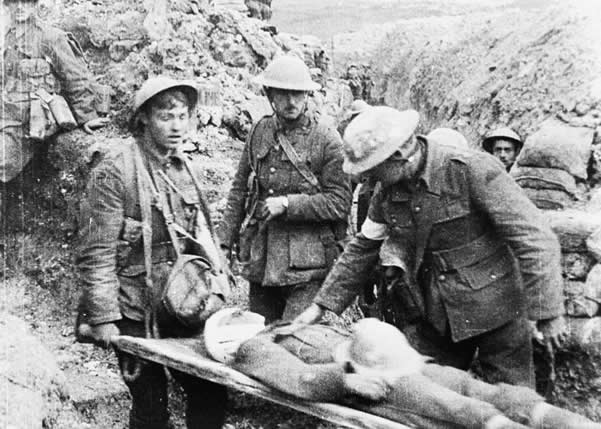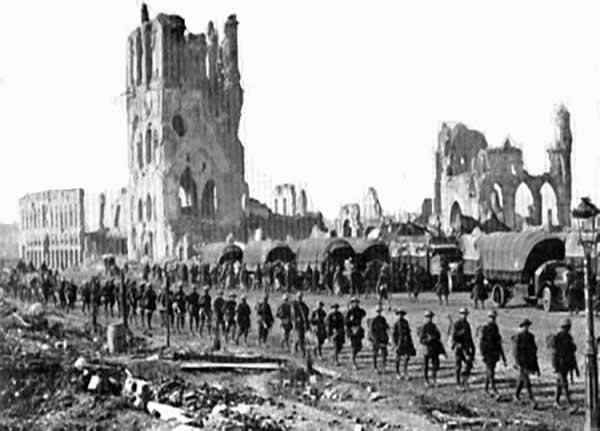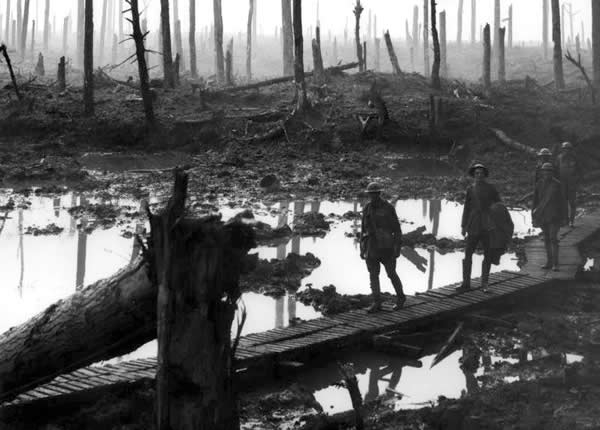WW1 -1916
Previous appeals by the war minister, Lord Kitchener ('Your country needs you') had raised over a million volunteers but, on 9 February, conscription began for men aged between 18 and 41. During the course of the war, over 4.5 million Britons served in arms (in addition to over three million troops from the British Empire).
Major Battles of WW1| Battle of Sheikh Sa'ad | Opened 6 January 1916 |
| Battle of the Wadi | Opened 13 January 1916 |
| Battle of Hanna | Opened 21 January 1916 |
| Battle of Verdun | Opened 21 February 1916 |
| Battle of Dujaila | Opened 8 March 1916 |
| Fifth Battle of the Isonzo | Opened 9 March 1916 |
| Battle of Lake Naroch | Opened 18 March 1916 |
| First Battle of Kut | Opened 5 April 1916 |
| Battle of Asiago | Opened 15 May 1916 |
| Trentino Offensive | Opened 15 May 1916 |
| Battle of Jutland | Opened 31 May 1916 |
| Battle of Lutsk | Opened 4 June 1916 |
| Battle of Khanaqin | Opened June 1916 |
| Destruction of Louvain | Opened 1 July 1916 |
| Battle of the Somme | Opened 26 August 1914 |
| Battle of Bazentin Ridge | Opened 14 July 1916 |
| Battle of Delville Wood | Opened 15 July 1916 |
| Battle of Pozieres Ridge | Opened 23 July 1916 |
| Battle of Romani | Opened 3 August 1916 |
| Sixth Battle of the Isonzo | Opened 6 August 1916 |
| Battle of Gorizia | Opened 6 August 1916 |
| Battle of Guillemont | Opened 3 September 1916 |
| Seventh Battle of the Isonz | Opened 14 September 1916 |
| Battle of Flers-Courcelette | Opened 15 September 1916 |
| Eighth Battle of the Isonzo | Opened 10 October 1916 |
| Ninth Battle of the Isonzo | Opened 1 November 1916 |
| Second Battle of Kut | Opened 13 December 1916 |
As warfare on all fronts looked like grinding to a halt, the British decided that the solution to the problem was to create a mass popular army. Previous appeals by the war minister, Lord Kitchener ('Your country needs you') had raised over a million volunteers but, on 9 February, conscription began for men aged between 18 and 41. During the course of the war, over 4.5 million Britons served in arms (in addition to over three million troops from the British Empire).
The German solution to the stalemate was to undertake a huge offensive at Verdun (February). The German intention was a war of attrition which would 'bleed France white'. Indeed, between the two armies, during the next ten months, over a million casualties occurred. In an attempt to relieve the pressure on the front at Verdun, the British and French undertook a push at the Somme and, on the first day of the battle (1 July), 20,000 Britons were killed and a further 40,000 injured. Even further innovations, such as the use of tanks (15 July) proved of little effect.
At sea, both the British and German High Seas fleet continued to strive for mastery. The one nearly decisive sea battle took place in the North Sea at Jutland on 31 May 1916. Although German battlecruisers initially caused considerable damage to their British counterparts, the engagement of the British Grand Fleet under Admiral Jellicoe caught the Germans at a disadvantage and inflicted significant damage. Although the British lost more ships and men in the battle, the German fleet was more heavily damaged and spent most of the rest of the war in its home ports. This allowed the British fleet to effectively control the seas, meaning imperial troops and supplies could reach Europe with much greater ease.
As the war raged on, changes continued to take place in Britain. In February, a scheme for National Savings was introduced to increase government access to funds and, on 21 May, a measure to ensure daylight saving (British summertime) was introduced to allow for greater production in the factories and munitions works of the industrial heartland. It was not all peace and quiet within the British Isles. On 24 April, an armed uprising took place in Dublin in an attempt to assert the need for Irish independence. An Irish Republic was proclaimed and the General Post Office was seized, but the rising was soon crushed by British forces and its leaders executed. Source BBC History website
Germany declares war on Belgium. United States declares neutrality. Great Britain gives Austria-Hungary ultimatum to stand down from hostilities. When Austria-Hungary doesn't comply a state of war is declared at 11.00pm
- The total number of deaths includes about 10 million military
- The total number of deaths includes about 7 million civilians.
- 98 Servicemen/Women went from lemsford
- 78 came back to Lemsford Parish
- 20 Men Never came back
| Shirley Knapp | The Cochrane Family |
|---|---|
| Doreen Wright | William Henry Gardener |
| Ron Forsdykes | Frederick William Reynolds |
| H.J.Brown | The Brown Brothers |
| The Letters of Lemsford | Read the lettters to and from the troops |



